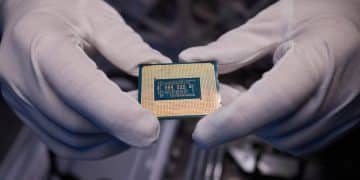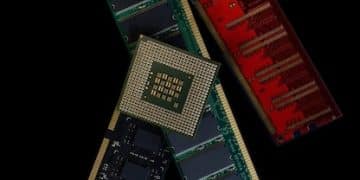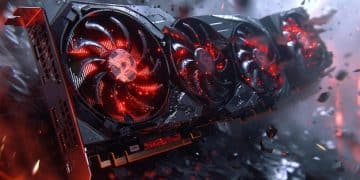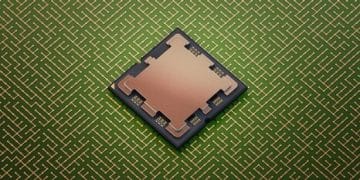PCIe 5.0 for Gaming: Is the Upgrade Worth It?
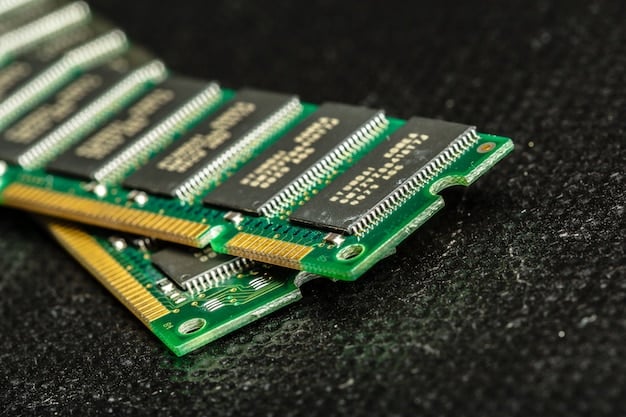
PCIe 5.0 offers double the bandwidth of PCIe 4.0, potentially improving gaming PC performance by enabling faster data transfer rates for modern GPUs and NVMe SSDs, but its real-world impact on gaming is still evolving and depends on specific hardware and games.
The world of PC gaming is constantly evolving, with new technologies promising to deliver even more immersive and responsive experiences. One of the latest advancements is PCIe 5.0, the newest generation of the Peripheral Component Interconnect Express standard. But what exactly is it, and does the impact of PCIe 5.0 on gaming PC performance: is it worth the upgrade?
Understanding PCIe 5.0: The Basics
PCIe (Peripheral Component Interconnect Express) serves as a high-speed interface for connecting components to a computer’s motherboard, including graphics cards, storage drives, and network cards. PCIe 5.0 is the latest iteration, and while it promises significant improvements in bandwidth and data transfer rates, understanding its core features is crucial before considering an upgrade.
What is PCIe and Why Does It Matter?
PCIe is the backbone of modern PC communication, enabling data to flow between the CPU, GPU, and other peripherals. Each new generation of PCIe doubles the bandwidth of its predecessor, which means PCIe 5.0 offers twice the bandwidth of PCIe 4.0 and four times the bandwidth of PCIe 3.0. This increase in bandwidth can potentially lead to reduced latency and improved performance, especially for bandwidth-intensive applications like gaming and video editing.
Key Features of PCIe 5.0
The most significant feature of PCIe 5.0 is its increased bandwidth, operating at 32 GT/s (Gigatransfers per second), which translates to a raw data rate of 3.94 GB/s per lane. Other key features include improved signal integrity, lower power consumption, and enhanced backward compatibility. These improvements are designed to meet the demands of next-generation hardware and ensure seamless integration with existing systems.
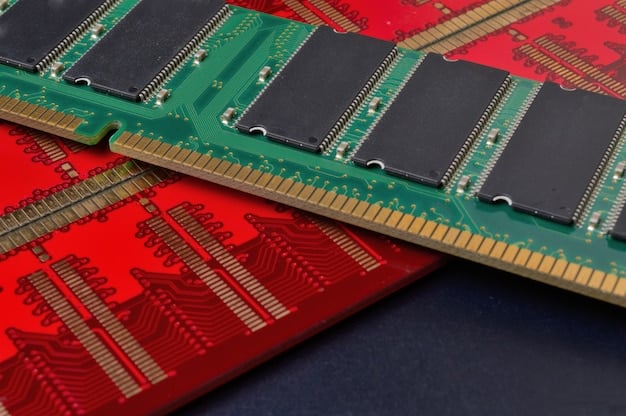
- Increased Bandwidth: The doubling of bandwidth from PCIe 4.0 to PCIe 5.0 is its primary advantage.
- Improved Signal Integrity: Higher bandwidth leads to greater demands on signal integrity, which PCIe 5.0 addresses with improved technology to reduce errors.
- Lower Power Consumption: Despite the increased performance, PCIe 5.0 aims to maintain or reduce power consumption through more efficient data transfer protocols.
- Backward Compatibility: PCIe 5.0 is designed to be backward compatible, meaning it can work with older PCIe generations, although performance will be limited by the older standard.
In summary, PCIe 5.0 offers a host of improvements that can potentially benefit various aspects of PC performance, including gaming. The increased bandwidth, improved signal integrity, and backward compatibility make it a promising technology for future gaming rigs.
The Theoretical Benefits for Gaming
On paper, PCIe 5.0 seems like a game-changer for PC gaming, with its increased bandwidth promising to unlock new levels of performance. However, theoretical benefits don’t always translate directly into real-world improvements, especially in gaming scenarios. Understanding these potential benefits requires a look at how they might impact different aspects of gaming.
Faster GPU Communication
Modern graphics cards rely on the PCIe interface to communicate with the CPU and system memory. With the growing complexity of game environments and the increasing size of textures and assets, the bandwidth demands on the PCIe bus are constantly increasing. PCIe 5.0 could theoretically reduce bottlenecks in GPU communication, leading to smoother frame rates and improved overall performance.
Improved SSD Performance
SSDs (Solid State Drives) are another component that can benefit from PCIe 5.0. With the introduction of DirectStorage, games can load assets directly from the SSD to the GPU, bypassing the CPU and reducing load times. PCIe 5.0’s increased bandwidth could further accelerate this process, resulting in faster game loading and reduced stuttering during gameplay.
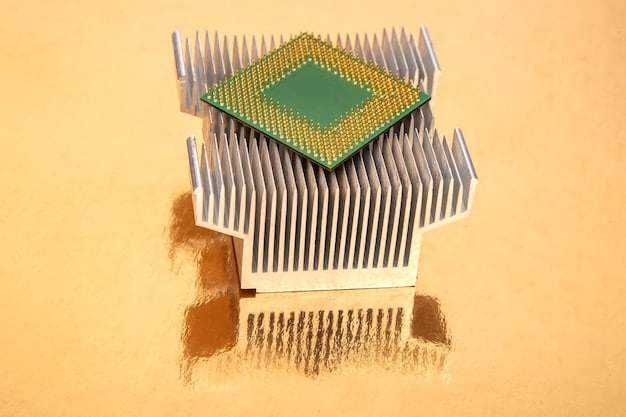
The theoretical advantages of PCIe 5.0 in gaming are promising. Faster GPU communication and improved SSD performance could lead to more immersive and responsive gaming experiences, making it an attractive upgrade for enthusiasts and hardcore gamers.
Real-World Gaming Performance: What to Expect
While the theoretical benefits of PCIe 5.0 are enticing, it’s essential to examine how these advantages translate into real-world gaming performance. The actual impact of PCIe 5.0 on gaming can vary depending on several factors, including the specific game, hardware configuration, and optimization.
Current GPU Limitations
As of now, the vast majority of games are not significantly limited by the bandwidth of PCIe 4.0. Modern GPUs are designed to work efficiently within the constraints of the existing PCIe infrastructure. While PCIe 5.0 offers twice the bandwidth, the actual performance improvement in most games is often marginal, with gains typically in the single-digit percentages.
Even with PCIe 5.0, the improvements may not be noticeable without specific hardware or software designed to make use of the faster interface.
SSD Performance in Gaming
SSDs connected via PCIe 5.0 can significantly improve loading times and reduce stuttering. DirectStorage technology leverages the speed of NVMe SSDs to load game assets directly to the GPU, bypassing the CPU. This can reduce load times and improve the overall gaming experience, especially in games with large open worlds or frequent loading screens.
- Marginal GPU Gains: Most games show only slight performance increases, typically in the range of 1-5%, when using PCIe 5.0 GPUs compared to PCIe 4.0.
- Faster Loading Times: PCIe 5.0 SSDs can substantially reduce game loading times, especially when combined with DirectStorage technology.
- Reduced Stuttering: The faster data transfer rates of PCIe 5.0 can help reduce stuttering and improve overall smoothness in some games.
DirectStorage and Game Loading
The practical gaming benefits of PCIe 5.0 depend on whether the game or application can actually use the increased bandwidth. Game developers need to optimize their titles to use DirectStorage.
The real-world gaming performance of PCIe 5.0 is a mixed bag. While some games may show marginal improvements, the most significant benefits are likely to be seen in faster loading times and reduced stuttering, thanks to the increased bandwidth of PCIe 5.0 SSDs and technologies like DirectStorage.
Hardware Requirements for PCIe 5.0
Before investing in PCIe 5.0, it’s crucial to understand the hardware requirements. Upgrading to PCIe 5.0 involves more than just a new graphics card or SSD. It requires a compatible motherboard and, in some cases, a new power supply to meet the demands of the latest components.
Compatible Motherboards
To take advantage of PCIe 5.0, you’ll need a motherboard that supports the standard. These motherboards are typically based on the latest chipsets from Intel and AMD. Make sure to check the motherboard’s specifications to ensure it has PCIe 5.0 slots for both the GPU and SSD.
GPUs and SSDs
Next, you’ll need PCIe 5.0-compatible GPUs and SSDs. modern graphics cards already support PCIe 5.0, allowing for faster communication with the CPU and system memory. Similarly, PCIe 5.0 SSDs are now available, which can significantly reduce game loading times and improve overall system responsiveness. Consider the long-term benefits of faster technologies like PCIe 5.0.
- Motherboard Compatibility: Ensure your motherboard supports PCIe 5.0 slots.
- GPU and SSD Support: Purchase GPUs and SSDs that are specifically designed for PCIe 5.0.
- Power Supply: Higher-performance PCIe 5.0 components may require a more robust power supply to ensure stable operation.
Upgrading to PCIe 5.0 requires careful consideration of the hardware requirements. A compatible motherboard, PCIe 5.0-enabled GPU and SSD, and a sufficient power supply are all necessary to unlock the full potential of this technology.
Is PCIe 5.0 Worth the Upgrade for Gaming?
The million-dollar question: Is upgrading to PCIe 5.0 worth it for gaming? The answer isn’t straightforward and depends on your specific needs, budget, and the current state of your gaming rig. Evaluating the cost against the potential benefits is key to making an informed decision.
Considerations Before Upgrading
Before jumping on the PCIe 5.0 bandwagon, consider whether your current system is already bottlenecked by older technologies. If you’re still using a PCIe 3.0 GPU or a SATA SSD, upgrading to PCIe 4.0 might offer a more noticeable improvement than going straight to PCIe 5.0. Additionally, assess whether the games you play can truly benefit from the increased bandwidth.
Future-Proofing Your System
While the immediate performance gains from PCIe 5.0 may be limited, upgrading to this standard can future-proof your system. As game developers begin to take advantage of DirectStorage and other bandwidth-intensive technologies, PCIe 5.0 will likely become more critical for achieving optimal performance. Investing in PCIe 5.0 now could save you from needing to upgrade again in the near future.
Deciding whether PCIe 5.0 is worth the upgrade involves weighing the cost against the potential benefits. While current performance gains may be modest, future-proofing your system and preparing for the next generation of gaming technologies might make it a worthwhile investment.
Alternatives and Future Trends
As with any technology, it’s crucial to consider alternatives and emerging trends that could impact the relevance of PCIe 5.0 in the future. Exploring alternatives and keeping an eye on future technologies can help you make a more informed decision about whether to upgrade to PCIe 5.0.
PCIe 4.0 as a Viable Alternative
For many gamers, PCIe 4.0 remains a viable alternative to PCIe 5.0. The performance difference between the two standards is often minimal in current games, and PCIe 4.0 components are typically more affordable. If you’re on a tight budget, sticking with PCIe 4.0 could be a more cost-effective option.
Emerging Technologies
Looking ahead, several emerging technologies could influence the future of PC gaming. Advancements in cloud gaming, streaming services, and new storage technologies like Optane may change the demands on local hardware. These trends could impact how much bandwidth is needed and whether PCIe 5.0 remains a critical component for high-performance gaming.
- PCIe 4.0: A cost-effective alternative that offers excellent performance for most current games.
- Cloud Gaming: The rise of cloud gaming could reduce the need for high-end local hardware.
- New Storage Technologies: Advancements in storage technology could further optimize data transfer and reduce bottlenecks.
In conclusion, PCIe 5.0 is a forward-looking technology that promises to enhance the gaming experience through faster data transfer rates. Whether it’s worth the upgrade depends on your specific needs, budget, and willingness to invest in future-proofing your system.
| Key Point | Brief Description |
|---|---|
| 🚀 Bandwidth Increase | Doubles bandwidth over PCIe 4.0, enhancing data transfer. |
| 🎮 Gaming Impact | Marginal gains in GPU performance, significant for loading times. |
| 💰 Upgrade Cost | Requires compatible motherboard and potentially new PSU. |
| 🔮 Future-Proofing | Prepares system for DirectStorage and demanding technologies. |
Frequently Asked Questions
▼
PCIe 5.0 is the latest generation of the Peripheral Component Interconnect Express standard, offering twice the bandwidth of PCIe 4.0 for faster data transfer in modern computers.
▼
Yes, it can. While GPU performance gains are minimal, it significantly reduces game loading times, especially when paired with technologies like DirectStorage.
▼
You need a motherboard that supports PCIe 5.0, a PCIe 5.0-compatible GPU and SSD, and potentially a more robust power supply to handle the higher power demands.
▼
Yes, PCIe 5.0 is designed to be backward compatible, meaning it can work with older PCIe generations, although performance is limited by the older standard.
▼
If you want to future-proof your system and have the budget, it’s a worthwhile upgrade. Otherwise, sticking with PCIe 4.0 may be more cost-effective for current gaming needs.
Conclusion
In conclusion, PCIe 5.0 is a promising technology that offers significant bandwidth improvements for gaming PCs. While the immediate performance gains in gaming may be modest, the potential for faster loading times, reduced stuttering, and future-proofing your system makes it a worthwhile consideration for enthusiasts and hardcore gamers. Evaluating your specific needs, budget, and current hardware is essential in determining whether PCIe 5.0 is the right upgrade for you.
